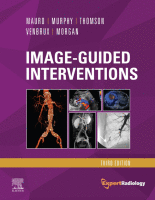Physical Address
304 North Cardinal St.
Dorchester Center, MA 02124

Most of this chapter discusses management of occlusive disease of the subclavian and brachiocephalic arteries. Treatment of various conditions such as thoracic outlet syndrome and more distal lesions is also covered. Subclavian and Brachiocephalic Disease Symptomatic chronic ischemia of the…

Acute lower extremity ischemia (ALI) is a serious condition with substantial morbidity and mortality. ALI refers to recent onset of lower extremity pain; long-standing lower extremity ischemia is dealt with elsewhere in this book. If ALI is severe and prolonged,…

You’re Reading a Preview Become a Clinical Tree membership for Full access and enjoy Unlimited articles Become membership If you are a member. Log in here

Imaging Modalities of The Upper Extremity Imaging of the arterial and venous systems is an important component of the evaluation in many vascular disorders involving the upper extremity. This chapter provides a brief overview of vascular imaging, including ultrasonography (US),…

After an arteriography or intervention, the access site must be effectively managed. The planning for access site control starts before gaining access. The operator must make sure that (1) the accessed artery is one that can be compressed, (2) the…

Invasive vascular imaging is based on the technique described by Sven Ivar Seldinger in 1953 ( Fig. 7.1 ). This elegant innovation, now known by Seldinger’s name, eliminated the need for surgical exposure of a blood vessel before catheterization, thus…

As the need for interventional radiologic procedures continues to grow, there is increased interest in better periprocedural pain control. Interventional radiology (IR) plays a significant role in pain management, therapeutically (for chronic pain) and supplementally (for pain caused by intervention).…

The x-ray equipment available to perform imaged-guided interventions has accelerated in technical capability, allowing increasingly complex procedures to be performed. Consequently, procedures tend to be longer and the dose to the patient higher. The interventionalist is positioned closest to the…

The interventional suite plays host to a wide variety of patient types and procedures. Some of the patients who arrive in the suite are in good baseline health, others are severely ill. In either case, patients can experience a life-threatening…

“It is much more important to know what sort of patient has a disease than what sort of a disease a patient has.” William Osler 1849–1919 Symptoms relating to vascular insufficiency are common complaints among patients presenting to emergency departments…